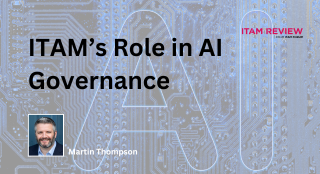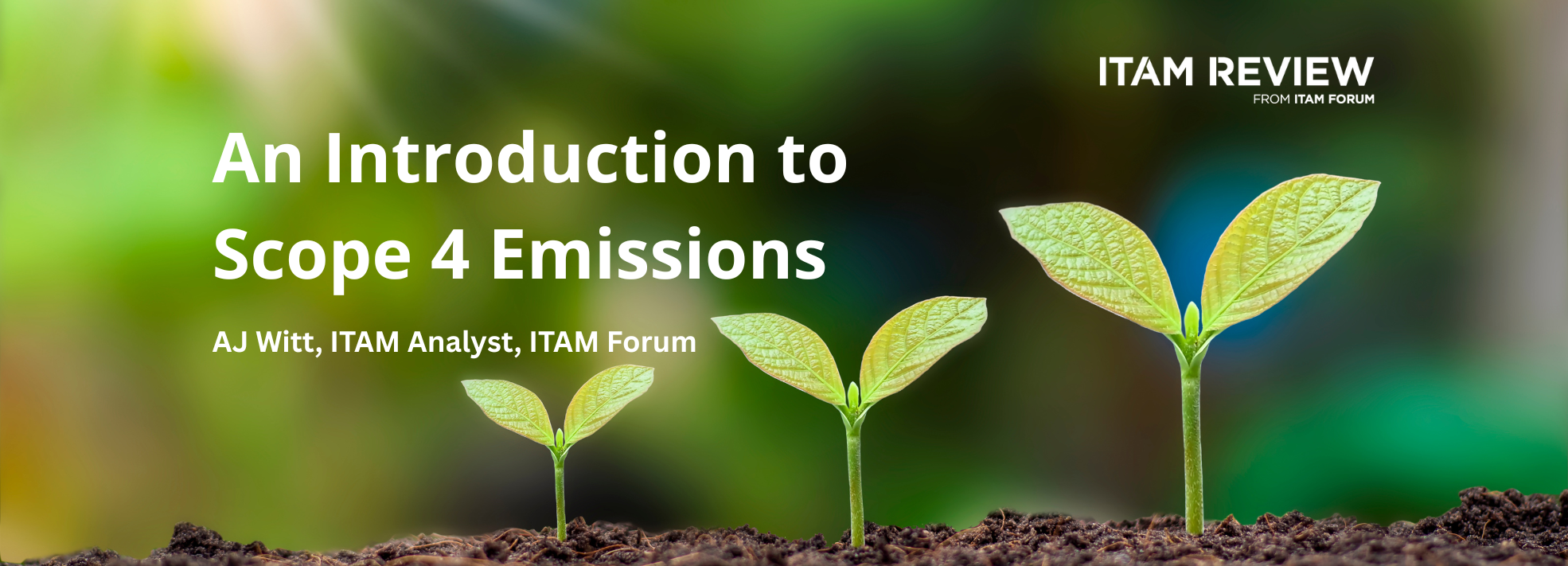Secret Diary of an IT Manager – The Importance of Managing Hardware Assets
 We recently spoke about free ITAM tools, gathering all of our software licenses and starting physical software audits. That was back in October, and 5 months on we are making good progress with our internal audits. However, we have encountered a number of other issues that we hadn’t considered.
We recently spoke about free ITAM tools, gathering all of our software licenses and starting physical software audits. That was back in October, and 5 months on we are making good progress with our internal audits. However, we have encountered a number of other issues that we hadn’t considered.
Reporting
I mentioned in my last article that whilst we have implemented free tools we could not trust them 100%. We have also encountered an issue whereby we are now unsure if the tools agent is on all of our hardware assets, so we are unsure if we have a complete view of what software is installed and what our compliancy is. The only way that I have started to evaluate what percentage of machines has been installed is to cross reference with the likes of active directory (AD). So far I have found this a long process. I mention a reason for this later on (hoarding machines!).
The free tools do provide some form of reports, but they are not as sophisticated as we hoped. There is a lot of it is raw data that is hard to interpret, but we make do as having these reports is better than nothing! We are using the reports to analyse our current install base and match the results with our existing licenses. Any non-compliancy issues are addressed immediately! Having said that, software licenses are creeping out from people’s desks all the time. Why they have the software license information I have no idea, it just goes to show that we have never really had any sort of ITAM processes in place.
Data Centre Environment
As you have probably guessed we have been focusing our efforts on the desktop environment. This is purely because we felt that this is where our biggest risks were, as we do not have a large datacentre environment. However, things have changed now and we have expanded, inheriting a large Oracle estate and subsequent licenses. My knowledge of datacentre licensing is not at expert level, so we will have to conduct research and potentially look for an external resource to help us understand our new datacentre estate. That proves to be another challenge to our ITAM implementation. I’ve found that is one of the frustrations with ITAM, you think you are making progress and then another challenge or issue arises. It is important to remember that I am not an ITAM professional; I am an IT Manager so have to focus on all other aspects of IT, so I am finding some of the licensing a challenge to understand!
Are The Free Tools Doing Their Job?
So far they are, however we are aware that they are not as sophisticated as dedicated paid-for SAM tools. For our sized environment they are currently working well with the resources we have as we would not have the staff to manage a complex SAM tool vendor effectively. They help us manage our compliancy to some extend, and allow us to assess who is using what software and try to recoup unused software licenses. A reminder to readers from the last article and any potential new readers, we are currently using OCS Inventory and GLPI Asset Management tools, both of which are free.
We have been in contact with some of the major tool vendors, and after a lot of research and quotes we have decided that (with the lack of support from our financial director) that they are simply too expensive. We have also heard that a number of customers find some of the tool vendors customer service to be poor and unhelpful, something that we are wary of, and do not want to buy in to. For any IT Managers out there that are looking at potential SAM tools, I would of course recommend the ITAM Review, but also LinkedIn. There are a number of groups and professionals who can give you an honest, working review of a SAM tool, rather than the marketing case studies tool vendors provide.
Hardware ‘Sharing’ and Hoarding Issues
We have recently started to also address our hardware assets and issues around existing desktops and laptops. By using the free tools mentioned we have identified the fact that we actually have a lot more desktops and laptops than we thought. We have discovered that some of our users have been sharing or hoarding laptops and desktops from users that have left or changed departments. We have even found instances of users keeping hold of their older hardware assets, despite having recently requested newer kit! This is what happens when you do not have an effective hardware processes in place.
Now that we have identified some of the issues around hoarding, and had a shock at how many hardware assets we have, we have implemented a basic ‘Hardware Asset Management’ policy and related process. This basically states that all users should have clear business justification for having more than one hardware asset, and that ALL unused hardware assets should be returned to IT before they receive any new pieces of hardware. We have also created a process so that users are aware of how to request new pieces of hardware, and how they need to return existing assets back to use within IT.
We have started to physically recoup some of the assets from our local office, and we are in contact with other offices to ensure we recoup their unused assets too. We are a central IT department, so local IT only need a handful of hardware assets in stock, the rest sit in our storage room. We are finding that due to the sheer amount of reclaimed hardware assets that we are running out of space, and therefore need to retire our hardware assets that are no longer in use to make way for new assets.
Addressing Older Pieces of Hardware
Another positive of recouping hardware and using free inventory solutions is that we can finally address the large(ish) number of older hardware assets that are currently within our environment. We have recently been receiving a number of Service Desk tickets whereby people are complaining at the speed in which their machines are running at. The majority of those people have a model of desktop/laptop that is at least 4 years old. Time for an upgrade! Whilst initially expensive, in the long run it will improve efficiency of our staff and also enable us to use newer versions of software.
Conclusion
Over the past few months we have clearly identified that to be successful at SAM, you need to also manage your hardware assets. We didn’t realise just how important hardware asset management is when you are looking to address and manage software compliancy issues. Managing hardware assets helps contribute towards the management of software assets. We have found that you cannot successfully ‘do’ one without the over.
I will provide you with another update in a few months time. We are currently going through a phase of transition and change within the organisation, so it should be an interesting time for our ITAM project.
Can’t find what you’re looking for?
More from ITAM News & Analysis
-
Broadcom vs Siemens AG - A Brewing Storm
The ongoing legal battle between VMware (under Broadcom ownership) and Siemens is yet another example of why ITAM goes far beyond license compliance and SAM. What might, at first glance, appear to be a licensing dispute, ... -
Shifting Left Together: Embedding ITAM into FinOps Culture
During one of the keynotes at the FinOps X conference in San Diego, JR Storment, Executive Director of the FinOps Foundation, interviewed a senior executive from Salesforce. They discussed the idea of combining the roles of ... -
Addressing the SaaS Data Gap in FinOps FOCUS 2.1
I recently reported on the FinOps Foundation’s inclusion of SaaS and Datacenter in its expanded Cloud+ scope. At that time, I highlighted concerns about getting the myriad SaaS companies to supply FOCUS-compliant billing data. A couple ...
Podcast
ITAM training
Similar Posts
-
The M&S Cyberattack: How IT Asset Management Can Make or Break Your Recovery
Marks & Spencer (M&S), the iconic UK retailer, recently became the latest high-profile victim of a devastating cyberattack. Fellow retailers The Co-Op and Harrods were also attacked. Recent reports suggest the rapid action at the Co-Op ... -
AI in ITAM: Insightful Signals from the Front Line
During our Wisdom Unplugged USA event in New York in March 2025, we engaged ITAM professionals with three targeted polling questions to uncover their current thinking on Artificial Intelligence—what concerns them, where they see opportunity, and ... -
How ISO/IEC 19770-1 Can Help Meet FFIEC Requirements
In the world of ITAM, the regulatory spotlight continues to intensify, especially for financial institutions facing increasing scrutiny from regulatory bodies due to the growing importance of IT in operational resilience, service delivery, and risk management. ... -
An Introduction to Scope 4 Emissions
Executive Summary For ITAM teams, sustainability is a core responsibility and opportunity. Managing hardware, software, and cloud resources now comes with the ability to track, reduce, and report carbon emissions. Understanding emission scopes—from direct operational emissions ...




